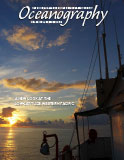Full Text
I met John Knauss only once, in passing, over 20 years ago, after I had given a seminar at the University of Rhode Island. Reflecting on that encounter later that evening, I was chagrined that I had squandered the opportunity to ask him how it was possible to do so many things so well for so long. The list is exhaustive: educator, researcher, seagoing oceanographer, program manager, government and university administrator, founding dean, and author. Most oceanographers, even with careers stretching the length of Knauss’s, can check just a couple of those boxes. In fact, are there oceanographers like John Knauss anymore? Contemplating this question reminds me of how baseball has evolved over the past few decades. Where once there were starting and relief pitchers, today there are starting pitchers, middle relief and long relief pitchers, setup pitchers and closers, as well as left-hand specialists and, seemingly, some pitchers to simply warm the bench. Few pitch the whole game today. But John Knauss—he pitched the whole game. He started, he was the relief, he closed, and he pitched the extra innings. Going the distance meant that his reach was tremendous, as evidenced by the titles of the articles in the 2001 issue of Oceanography honoring John’s 50 years of service to ocean science.
On the research front, as a graduate student at Scripps Institution of Oceanography, John made the first comprehensive measurements of the Pacific Equatorial Undercurrent. As his career progressed, he increasingly turned his attention to marine policy and management. He played an instrumental role in the formation of the National Sea Grant Program in 1966. He was the only academic oceanographer on the Stratton Commission, authorized by Congress in 1966 to make recommendations for the “full and wise use of the marine environment.” Those recommendations included creation of the National Oceanic and Atmospheric Administration and the formulation of the Coastal Zone Management Act. His strong belief in freedom of research on the high seas led to his appointment as a delegate to conference discussions that culminated in the Law of the Sea Treaty, negotiated in the 1970s and adopted in 1982. John’s passion and talent for marine policy and management were evident during his tenure as Under Secretary for Oceans and Atmosphere in the Department of Commerce and administrator of the National Oceanic and Atmospheric Administration (1989–1993). His contributions to marine science, policy, and management were recognized by a National Sea Grant Award, an Ocean Sciences Award from the American Geophysical Union, and fellowship in the American Geophysical Union, the American Association for the Advancement of Science, and the Marine Technology Society.
And there’s more. John was deeply interested in graduate education. His graduate study at Scripps impressed upon him the importance and utility of a multidisciplinary core education, a priority he brought to the University of Rhode Island in 1962 when he was appointed as the founding dean of the Graduate School of Oceanography. John’s interest in graduate education extended beyond preparing students for academic research into the realm of what today we would call public scholarship. His accomplishments in marine policy and management, built upon a background as a research oceanographer, were a strong testament to the contributions that PhD oceanographers could make outside the walls of the academy. Fittingly, the Washington, DC, internships created as part of the Sea Grant program are named in his honor. Since 1979, John A. Knauss Marine Policy Fellowships have been awarded to hundreds of graduate students interested in applying their training as oceanographers to the service of federal agencies focused on ocean, coastal, and Great Lakes resources. It is fair to say that his efforts have not only helped shape graduate programs in ocean sciences, but have also opened many doors for graduates of those programs.
John Knauss inspired our generation. What are we doing to inspire and prepare the next generation? Are our graduate students prepared to meet the science goals outlined in the recent report Sea Change: 2015–2015 Decadal Survey of Ocean Sciences and the needs of public scholarship, including outreach and education? Are we giving these students the leadership and communication skills they need for careers in industry and the government? In short, are we serving our students well? If not, perhaps we also need a sea change in graduate education. Please consider attending the TOS Town Hall at the 2016 Ocean Sciences meeting where there will be a discussion focused on the future of graduate education in ocean sciences. The conversation will be enriched by many voices.
More than what we write or say about John Knauss, the most fitting tribute to his legacy is to continue his tradition of contributing to the ocean sciences community. Thinking carefully about how we educate the next generation of oceanographers is a step in that direction. One might call it an opening pitch. Few of us will go the distance that John did, but he certainly provides inspiration to all of us to step to the mound for a few innings and pitch some new ideas.
– M. Susan Lozier, TOS President

